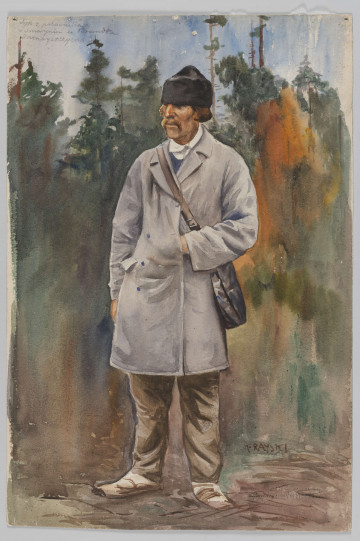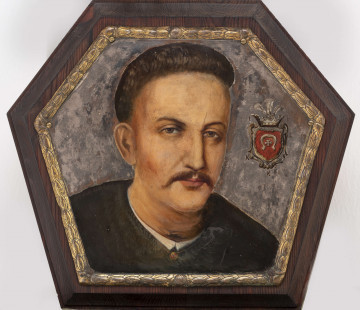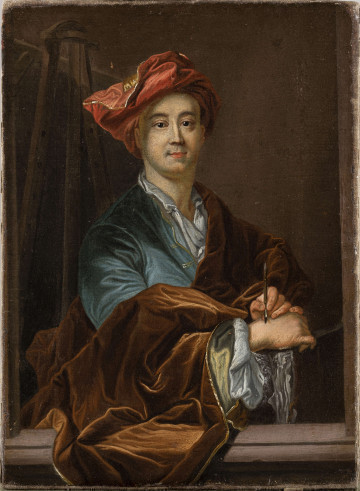
Type from a hunting trip in Smoryń in Brandt’s land Zamość region
1901 — 1925
National Museum in Lublin
Part of the collection: European painting
The portrait of Jakub Sobieski shows the prince as a young, steadfast man who, at the age of less than twenty was already involved in the political and military activities conducted by his father, Jan III Sobieski. Thus, he was portrayed as commanding a siege of one of the fortresses, probably during the Moldavian expedition, which was a response to the imperial proposal to concentrate Christian forces in Hungary to recapture more strongholds from the Turks.
The canvas was commissioned from an eminent Dutch painter associated with the Guild of St Luke in Antwerp, Reinier de la Haye, who became famous for, among other things, portraying members of European royal courts and wealthy townsmen, concentrating on depicting their rich attire. Therefore, the painter portrayed the prince in a representative, shining black armour and a proud pose, with his right hand resting on his hip and the left one falling on a helmet (a type of open helmet which was known in Poland since the early Middle Ages under the name of ‘szłom’) lying next to him. Long black locks of hair frame Jakub Sobieski's handsome face in an à la lion wig made in 17th-century French fashion. It is worth mentioning that hair for wigs was sometimes obtained from deceased people or bought from poor serfs, while the most valued raw material came from children and young girls due to its strength and softness.
Young men returning from France or Italy were sometimes the subject of ridicule and scorn from the local gentry. The Polish poet Krzysztof Opaliński described young men styling themselves after the Western fashion in the following way:
You, son returns from Italy tandem to your homeland [...].
He monstrates, perfumes, powders and dresses
Hair, from which the iron will hardly ever come off.
Author / creator
Dimensions
cały obiekt: height: 31,5 cm, width: 40,5 cm
Object type
painting
Technique
oil technique
Material
canvas, oil-based paint
Creation time / dating
Creation / finding place
Owner
The National Museum in Lublin
Identification number
Location / status

1901 — 1925
National Museum in Lublin

1700 — 1720
National Museum in Lublin

1700 — 1730
National Museum in Lublin
DISCOVER this TOPIC
Museum of King Jan III's Palace at Wilanów
DISCOVER this PATH
Educational path